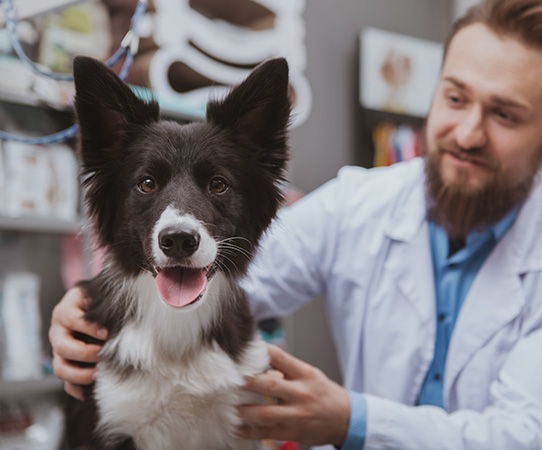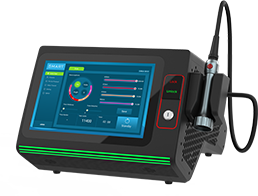Laser Therapy for Dogs

You want to give your pet the best possible quality of life. When your pet is in discomfort or pain, it is important to alleviate his or her distress. Laser therapy is a non-surgical and pain-free treatment used in pet rehabilitation to speed up the body’s natural healing process and relieve pain. It’s a great option for post-op pets, older pets, and pets living with chronic conditions like arthritis. The most common clinical treatment is laser therapy for dogs. It is also worth mentioning that laser therapy also benefits other animals such as cats and horses.








Professional Physiotherapy Equipment
(Number 1 best seller on Alibaba)
11 years | Laser Physiotherapy supplier & leader | OEM & ODM
*Products are automatically ranked based on GMV
What is Pet/ Veterinary Laser Therapy?
A Class IV deep-tissue laser uses a beam of laser light to penetrate deeply into the tissue without damaging it. Laser energy releases a biological reaction in cells known as photobiomodulation. This reduces inflammation, pain and speeds up healing.
Laser therapy can be used to help your dog live a better life, whether they are suffering from post-surgical discomfort or simply getting older. The treatments are quick and easy to integrate with other holistic practices such as acupuncture, hydrotherapy, and reiki.
Cold Laser Therapy VS Class 4 Laser Therapy
Cold Laser Therapy and Class 4 Laser Therapy are commonly utilized by most veterinary clinics. Whether you are a pet owner or a vet, you should understand the differences between them. In fact, both of them involve a noninvasive procedure that uses light to stimulate cell regeneration and increase blood circulation. Their differences lie in the following aspects:
Power Output
Cold Laser Therapy utilizes low-energy lasers or light-emitting diodes (LEDs) with relatively low power output.
Class 4 Laser Therapy uses high-energy lasers with higher power output.
Tissue Penetration
Due to the difference in power output, Cold Laser Therapy primarily targets superficial tissues and has good penetration capabilities for the skin and shallow tissues.
Class 4 Laser Therapy has higher power output and can penetrate deeper into tissues, including muscles, ligaments, and joints.
Treatment Effects and Speed
As a result of low power output and shallow tissue penetration, Cold Laser Therapy usually requires longer treatment times, and the effects may gradually appear.
Class 4 Laser Therapy, with its higher power output and deeper tissue penetration, may yield faster treatment effects.
Application Range and Treatment Areas
Cold Laser Therapy is commonly used for tissue repair promotion, pain relief, and inflammation reduction in superficial treatments. It is suitable for various conditions, including wound healing, arthritis, and soft tissue injuries.
Class 4 Laser Therapy, with its higher power and deeper penetration, is widely used for deeper tissue treatments, such as deep muscle injuries, neurological conditions, and skeletal issues.
Safety Considerations
Cold Laser Therapy acts at a much more superficial level, and it is deemed safe for veterinary clinics and home use.
Class 4 Laser treatments come with greater risk of cutting or burning caused by the increased intensity of laser beams, so it is mostly used by professional vets in veterinary clinics.
What Conditions Can Laser Therapy Treat?
· Muscle pain and inflammation
· Faster wound healing
· Osteoarthritis (both chronic and acute)
· Degenerative joint disease
· Bone fractures
· Tendon and ligament injuries
· Strains and sprains
· Dental procedures
· Post-surgical recovery

How Laser Therapy Helps Tissue Repair
Laser therapy, specifically class 4 laser therapy, has been proven to play an integral part in tissue repair and regeneration. By harnessing concentrated light energy to stimulate cell activity and facilitate healing processes in various tissues throughout the body, laser therapy helps facilitate tissue repair.

Increased Cellular Metabolism
Increased Blood Flow
Reduced Inflammation
Stimulation of Collagen Production
Neovascularization and Nerve Regeneration

Laser Treatment for Arthritis in Dogs
Class 4 laser therapy can serve as a valuable adjunctive treatment for dogs suffering from arthritis, which is the most common condition used to address. When dogs have arthritis, their joints come with a lot of inflammation. Laser therapy helps to reduce that inflammation and help promote the new healthy cells to come up, thus making their joints a lot more comfortable in the long run.
In most cases, class 4 laser therapy is used alongside medications or other treatments, such as physiotherapy or hydrotherapy, to help manage arthritis and reduce pain.
Laser therapy for arthritis in dogs can be beneficial for dogs with liver disease or other illnesses that prevent them from taking medications, or for those that have experienced side effects with pain medications.
Laser Therapy for Dogs – FAQs
>>About Laser Type and Device
Why should I consider class 4 laser therapy for my dog?
In veterinary medicine, Class 3 and Class 4 therapeutic lasers are most commonly used. The higher the power of the laser, the shorter the time that is needed to penetrate into the animal’s tissues. In other words, class 4 laser is considered to be more powerful and efficient with increased depth of penetration and long-lasting results.
What is Smart class 4 laser therapy for dogs?
The Smart Laser Therapy is a brand of laser therapy machine used to treat humans and animals. It provides different wavelengths options to create a laser light that can be used for acute and chronic tissue injury and pain. This machine is the most flexible option for animals undergoing laser therapy based on clients’ application requirements! Smart Class IV laser can be clinically used in veterinary therapy, surgery and dentistry. Come and treat your pets with this state-of-the-art technology!
Is there home laser therapy for dogs?
As technology develops, certain cold laser devices have been introduced for at-home use. Cold laser therapy machines for home use for dogs are low-level lasers that deliver a lower frequency of light. Although they are not as powerful as the class 4 lasers used in veterinary clinics, they can still have similar effects. There are now many cold laser therapy devices such as our PowerCure Pro that can be purchased by dog owners for home use. This is our updated and more powerful handheld laser therapy device that can offer your furry friend instant pain relief.
>>About Treatment Process and Protocols
Are there any questions I should ask my veterinarian before the treatment?
It’s crucial to customize the optimal treatment plan for your pet since every pet is unique in their needs and conditions. For instance, if you have a hunting dog, scheduling laser therapy sessions after extensive hunts can be beneficial in relieving muscle soreness and providing relief. So, the best thing to do is to consult your vet about what’s going on with your pet, and they can help you figure out the best plan.
Is laser therapy for dogs painful?
During a typical treatment session, the dog will lie on a padded bed or blanket on a table or the floor. Your dog is awake during the procedure, and sedation or restraint is rarely necessary. In fact, most dogs consider the treatment pleasant, and may just lie down and sleep during the session.
Then the veterinarian would use a therapeutic laser to deliver treatments, with the animal simply reclining. He or she would slowly move the treatment handle back and forth over the treated area. Your dog will feel a gentle soothing warmth. Sessions last up to 30 minutes.
To ensure safety, both the dog and people in the room must wear goggles to protect their eyes from the laser light while it is in use.
Is there home laser therapy for dogs?
No, it is not painful at all. In fact, it can effectively decrease their pain levels. During the treatment, laser therapy can stimulate acupressure points that offer musculoskeletal relief. It can also block nerve receptors to reduce pain. Thus, laser therapy offers a comfortable and non-painful approach to managing pain in animals.
How long does a laser treatment session take?
Sessions usually ranges from 15 to 20 minutes.
The length of a single laser treatment depends on:
· the size of the area being treated
· the disease being treated (whether it is a chronic or acute issue)
· the type of laser being used (Lasers are categorized into four classes, with class 4 laser delivering the highest power output.)
How many sessions will your dog need?
This depends on the condition being treated. For acute conditions, one or two treatments may be sufficient. For chronic conditions like arthritis or joint pain, more intensive treatment is likely to be scheduled (several times per week) and then decreased to weekly booster sessions as required to control pain.
Does my dog need other treatment method?
Laser therapy for dogs plays a significant role in a comprehensive pain management program. It can be combined with various modalities such as acupuncture, massage, chiropractic care, and hydrotherapy, as well as medications and supplements.
Laser therapy is particularly beneficial when traditional therapies like prescription pet medications are not suitable due to concurrent heart, kidney, or liver disease. Laser therapy can enhance the comfort and mobility of these patients, offering an alternative with minimal side effects.
Once laser therapy integrates with both pharmacologic and non-pharmacologic approaches, it can enhance the effectiveness in alleviating pain and improving the overall well-being of the dog.
How long do the benefits of laser therapy for dogs typically last?
Again, it varies, as it depends on what you’re using it for, but most of the time, laser therapy is used for something like arthritis. Generally, the procedure starts about every few days for the first couple of weeks. So, your dog is usually in the clinic at least every other day, or at least a couple of times a week to help get started. But once the inflammation is under control, laser therapy scheduled once a week, or even down to once a month, can still be beneficial.
>>About Safety and Cost
Will laser treatment hurt my dog?
Dogs often wear protective goggles during the procedure, so it will not hurt them. The laser device produces a mild warmth, but most pets find this sensation pleasant and relaxing. Areas of acute inflammation, such as surgical sites or wounds, may be sensitive briefly after treatment. So it’s non-invasive and completely safe. It doesn’t hurt them. They tend to enjoy it.
Are there any risks or side effects associated with laser therapy?
High-frequency units can cause thermal burns to tissue if misused. However, laser therapy is generally very safe for dogs if performed correctly using the correct frequency and duration. The biggest danger of laser therapy is retinal damage to anyone who looks directly at the laser beam. The person operating the laser beam and anyone else within a certain radius of the beam should wear protective goggles to prevent damage to their eyes. Therefore, as long as we’re using it appropriately, it is perfectly safe and there aren’t any risks or side effects.
How much does dog laser therapy cost?
Since there are numerous laser treatments and procedures available, they serve different purposes and therefore have varying costs. Additionally, patients will receive a personalized laser treatment plan that caters to their specific needs. After weighing all the costs and benefits, laser therapy treatments are typically found to be a cost-effective healthcare solution.
THE SCIENCE AND EVIDENCE BACK IT
Transcranial photobiomodulation (laser) therapy for cognitive impairment: A review of molecular mechanisms and potential application to canine cognitive dysfunction (CCD).
https://pubmed.ncbi.nlm.nih.gov/35603072/
Low-Level Laser Therapy for Osteoarthritis Treatment in Dogs at Missouri Veterinary Practice.
https://pubmed.ncbi.nlm.nih.gov/32182110/
Perilesional photobiomodulation therapy and physical rehabilitation in post-operative recovery of dogs surgically treated for thoracolumbar disk extrusion.
https://pubmed.ncbi.nlm.nih.gov/32334585/
Medical lasers
Professional CLASS 4 high-power laser therapy machine
Home use
Portable handheld cold laser therapy device
Veterinary use
Laser therapy machine, shockwave physical therapy, widely used in animals



